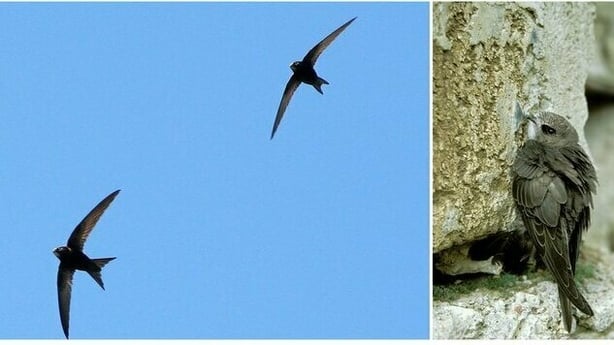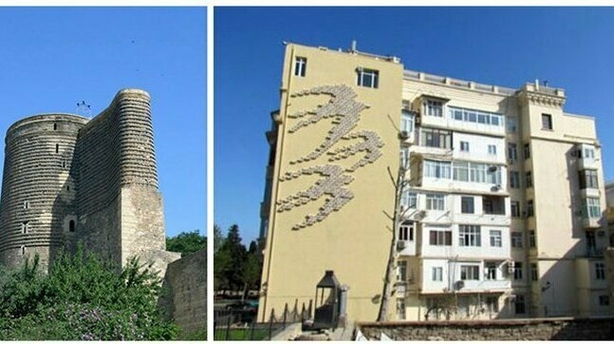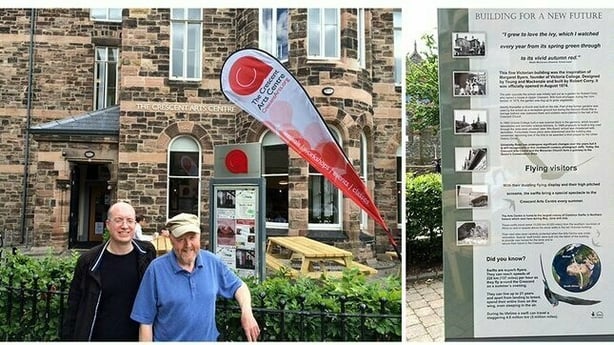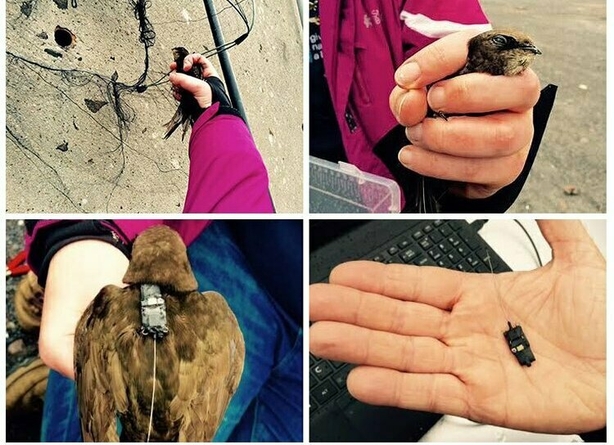Mooney Goes Wild's wildlife radio documentary over the Bank Holiday weekend was all about The Common Swift (Apus apus). Click on the video above to join host Derek Mooney as he learns about efforts being made across Europe, from Cork to Warsaw, and from Belfast to Baku in Azerbaijan, to learn more and thus help save this favourite summer visitor!

We start the programme by saying Slán To The Swift, as Derek meets with staff from BirdWatch Ireland (including Niall Hatch and Brian Caffrey) and Dublin City Council's Biodiversity team. He then travels to Cork, to meet Professor John O'Halloran from UCC, to learn about their swift monitoring project.
To find out more about the Swift Nestbox Monitoring in UCC, click here.
From there, Derek and Niall travel to Baku, in Azerbaijan, to find out from Samir Nuriyev, Director of the State Historical Architectural Reserve, Icherisheher, about work being done in that city to protect swifts...
Displaced Azeri Swifts Of Baku

In the capital of Azerbaijan, Baku, the famous Maiden's Tower has been home to swifts for many years. Holes in its crumbling walls provided nestplaces for about 250 Swifts for the past 30 or 40 years. The tower is now being conserved to solve a hundred years of weather damage. But the conservation, when completed, will leave only about 40 holes usable by the Swifts. So special swift boxes are being installed on local buildings to rehouse the birds.
From there, Derek and Niall visit Poland, to talk to OTOP's Karolina Kalinowska, the International Manager of the Spring Alive project. OTOP is the BirdLife International Partner in Poland, and Spring Alive is an international campaign to encourage children’s interest in nature and the conservation of migratory birds. For more information about the project, click here.
Swift Cities
Derek and Niall then visit Peter Cush, Senior Scientific Officer with the Biodiversity Unit in the Northern Ireland Environment Agency, to learn about swift cities, and how they can help swift numbers.
To find out more about Belfast's Swift City, click here.

Swift Facts
The Swift is an iconic and intriguing urban bird. But it’s amber-listed in Ireland due to a decline in its population – thought to be due to the loss of available nest sites – and that’s compounded by the brevity of their breeding season which is shorter than any other breeding birds other than the cuckoo. They arrive here in May and depart for Africa in early September.
Swifts are supreme aerialists and are Ireland’s fastest birds in level flight – clocking up about one hundred and eleven km/h. Their wings are long and narrow and superbly adapted for fast flight and their forked tail is closed for maximum efficiency. This enables them to fly to heights of more than ten thousand feet (3 km) and to travel about 19,000 km a year. In 1964, an 18-year-old tagged bird was found dying in the UK. It was estimated that in its lifetime, it had flown about six and a half MILLION km – the same as flying to the moon and back 8 times!
The Swift has tiny feet and virtually no legs, which makes taking flight from a standing start virtually impossible – so they never purposely land on the ground. But they have little need to as they do pretty much everything in the air – from eating and sleeping to bathing and preening.
A young Swift will spend its first two or three years in constant flight only landing in high sheltered locations to nest. They are the only known species who actually mate on the wing.
But it’s the extraordinary flying habits of Swifts which makes them so hard to study because they’re so fast and totally aerial - and a team of scientists in Northern Ireland is currently finding a way around this problem.

Swift 'Backpacks'
They’re fitting Common Swifts with "backpacks" containing tiny GPS units, to find out where they forage. This research is crucial to shedding light on key feeding areas, which have previously been impossible to monitor. As Swifts can feed many miles away from where they breed, it’s essential that conservationists identify those sites so that they can each be protected – with the aim of safeguarding the species to secure its long term survival.
We conclude our focus on The Common Swift as Derek meets Dr. Kendrew Colhoun (Senior Conservation Scientist with the RSPB), Róisín Kearney (trainee bird ringer with the RSPB), and Philip Carson (Conservation Advisor with the RSPB) to learn more about this exciting project.

Tune into Mooney Goes Wild every Monday, 10pm-11pm on RTÉ Radio 1.
For more information on the show, click here and follow @NatureRTE on Twitter and facebook.com/rtenature on Facebook.